EriaKadu1332
Member
I figured I would post these here since a lot of people have asked. Very few people have worked with F. Viridis and even fewer still, from what I have been told, have produced viable clutches.
But so far the easy part is done; now comes the hard part: keeping these guys alive.
So if you are interested, here is a breakdown of the journey so far:
About two years ago I received my first chameleon, a Furcifer lateralis. Immediately, I was obsessed and wanted more. Because, you know, chameleons are impossible to keep to only 1.
So I begin for the search for more Furcifer lateralis.
I went to a local reptile shop that just received a shipment in from Madagascar and they were advertising WC lateralis. So I bought two more, one male, one female. I took them home and immediately noticed the muted physical distinctions.
After much research and consultations from chameleon enthusiasts and conservation experts who work exclusively with Malagasy species, we came to the conclusion that this species was Furcifer viridis, advertised more commonly as the "Green Carpet Chameleon".
I kept the chams similarly to how you would keep a lateralis according to Frank Payne due to the little information available for this species.
When it came time, the first clutch was laid. The female, Rumor, was an exceptionally easy layer and continued to be until her passing. Lay box, bioactive earth, etc-- it did not matter. She did not appear to have the egg-scattering trait that the lateralis are known for and was ready and willing to lay in just about anything you offered to her. She even laid one clutch neatly in vermililculite mixed with a little playsand for me!
This first clutch was kept in a humidity and temperature- controlled environment at 70°F. Humidity was kept at around 80%. This first clutch died at 1 year 5 months, being all eggs molded and turned black. 13 eggs.
The second clutch was kept in a container, sealed, and kept at the top of a closet. 70°F and 80% humidity. These eggs died at 1 year 3 months. Same as the first. 11 eggs.
The third clutch came unintentionally. Rumor was not actively bred but retained the sperm from the previous breeding. She produced her biggest clutch yet at this time despite no increase in her diet. 20 eggs. They were laid in the bottom of her bioactive enclosure. These eggs were removed and kept in a zoomed incubator in vermiculite. These eggs died at 1 year.
The fourth clutch also was produced from retained sperm. This clutch she laid in vermiculite mixed with a little playsand. They were kept in the incubator with the fourth clutch at 72°F and 80% humidity. This clutch also died at one year. 17 eggs.
The fifth clutch was laid in a normal lay box, 50/50 sand and topsoil. 13 eggs. Intentional breeding. These eggs were kept in a sealed container in a bathroom. There was no temperature or humidity control involved and they also felt the cool down from wintertime a few months ago. It is unknown how cool it got or for how long because there was no way to measure it. This clutch survived and has currently produced 2 babies with several other sweating eggs waiting to pipe. This clutch hatched at 1 year 1 month.
The final clutch before Rumor's passing was laid in a plant that had been added to her enclosure-- she didn't even wait for it to be taken out of the container and planted! The clutch died at 4 months due to the plant being infested with some sort of insect that tore in to the eggs. 12 eggs.
It is a very big disappointment that with so many eggs produced, only so many have survived and the ones that have, have provided very little information as to why or how to properly take care of the eggs in order to get them to hatch. So far only two hatchlings have been welcomed to our world with 6 more showing signs of fully developed babies when candled, and five seemingly empty with just veins.
The hatchlings so far are split in to two groups at two days old already: a voracious and brave explorer, and a timid and scared sleeper. Fingers crossed they all will survive.
Attached are photos of babies and Rumor, the mama. Rest in peace sweet girl.
But so far the easy part is done; now comes the hard part: keeping these guys alive.
So if you are interested, here is a breakdown of the journey so far:
About two years ago I received my first chameleon, a Furcifer lateralis. Immediately, I was obsessed and wanted more. Because, you know, chameleons are impossible to keep to only 1.
So I begin for the search for more Furcifer lateralis.
I went to a local reptile shop that just received a shipment in from Madagascar and they were advertising WC lateralis. So I bought two more, one male, one female. I took them home and immediately noticed the muted physical distinctions.
After much research and consultations from chameleon enthusiasts and conservation experts who work exclusively with Malagasy species, we came to the conclusion that this species was Furcifer viridis, advertised more commonly as the "Green Carpet Chameleon".
I kept the chams similarly to how you would keep a lateralis according to Frank Payne due to the little information available for this species.
When it came time, the first clutch was laid. The female, Rumor, was an exceptionally easy layer and continued to be until her passing. Lay box, bioactive earth, etc-- it did not matter. She did not appear to have the egg-scattering trait that the lateralis are known for and was ready and willing to lay in just about anything you offered to her. She even laid one clutch neatly in vermililculite mixed with a little playsand for me!
This first clutch was kept in a humidity and temperature- controlled environment at 70°F. Humidity was kept at around 80%. This first clutch died at 1 year 5 months, being all eggs molded and turned black. 13 eggs.
The second clutch was kept in a container, sealed, and kept at the top of a closet. 70°F and 80% humidity. These eggs died at 1 year 3 months. Same as the first. 11 eggs.
The third clutch came unintentionally. Rumor was not actively bred but retained the sperm from the previous breeding. She produced her biggest clutch yet at this time despite no increase in her diet. 20 eggs. They were laid in the bottom of her bioactive enclosure. These eggs were removed and kept in a zoomed incubator in vermiculite. These eggs died at 1 year.
The fourth clutch also was produced from retained sperm. This clutch she laid in vermiculite mixed with a little playsand. They were kept in the incubator with the fourth clutch at 72°F and 80% humidity. This clutch also died at one year. 17 eggs.
The fifth clutch was laid in a normal lay box, 50/50 sand and topsoil. 13 eggs. Intentional breeding. These eggs were kept in a sealed container in a bathroom. There was no temperature or humidity control involved and they also felt the cool down from wintertime a few months ago. It is unknown how cool it got or for how long because there was no way to measure it. This clutch survived and has currently produced 2 babies with several other sweating eggs waiting to pipe. This clutch hatched at 1 year 1 month.
The final clutch before Rumor's passing was laid in a plant that had been added to her enclosure-- she didn't even wait for it to be taken out of the container and planted! The clutch died at 4 months due to the plant being infested with some sort of insect that tore in to the eggs. 12 eggs.
It is a very big disappointment that with so many eggs produced, only so many have survived and the ones that have, have provided very little information as to why or how to properly take care of the eggs in order to get them to hatch. So far only two hatchlings have been welcomed to our world with 6 more showing signs of fully developed babies when candled, and five seemingly empty with just veins.
The hatchlings so far are split in to two groups at two days old already: a voracious and brave explorer, and a timid and scared sleeper. Fingers crossed they all will survive.
Attached are photos of babies and Rumor, the mama. Rest in peace sweet girl.
Attachments
-
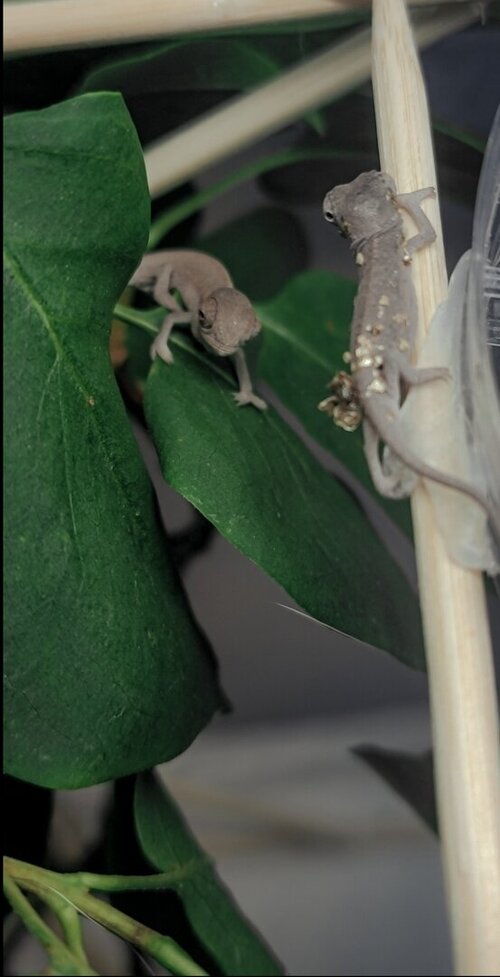 Screenshot_20220606-154455_Lightroom.jpg68.6 KB · Views: 219
Screenshot_20220606-154455_Lightroom.jpg68.6 KB · Views: 219 -
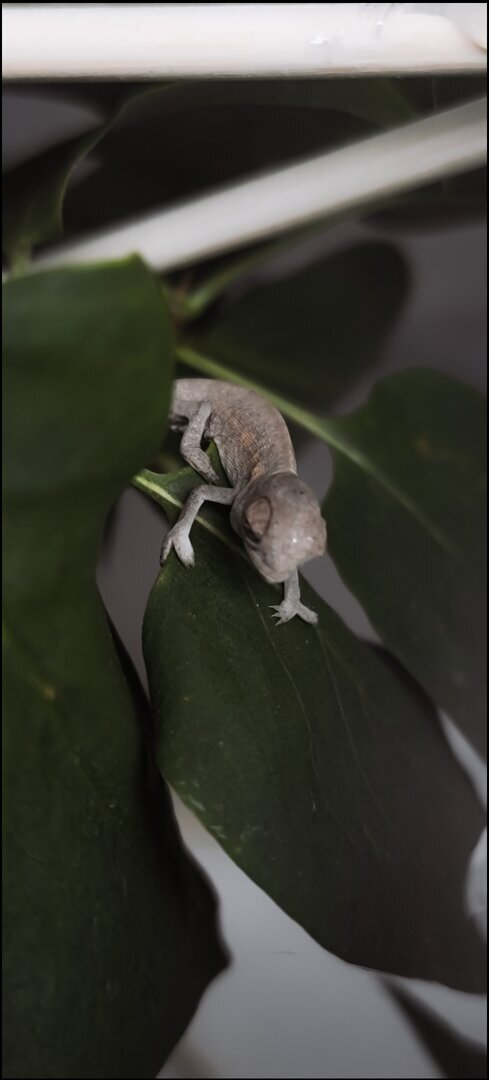 Screenshot_20220606-154350_Lightroom.jpg41.6 KB · Views: 206
Screenshot_20220606-154350_Lightroom.jpg41.6 KB · Views: 206 -
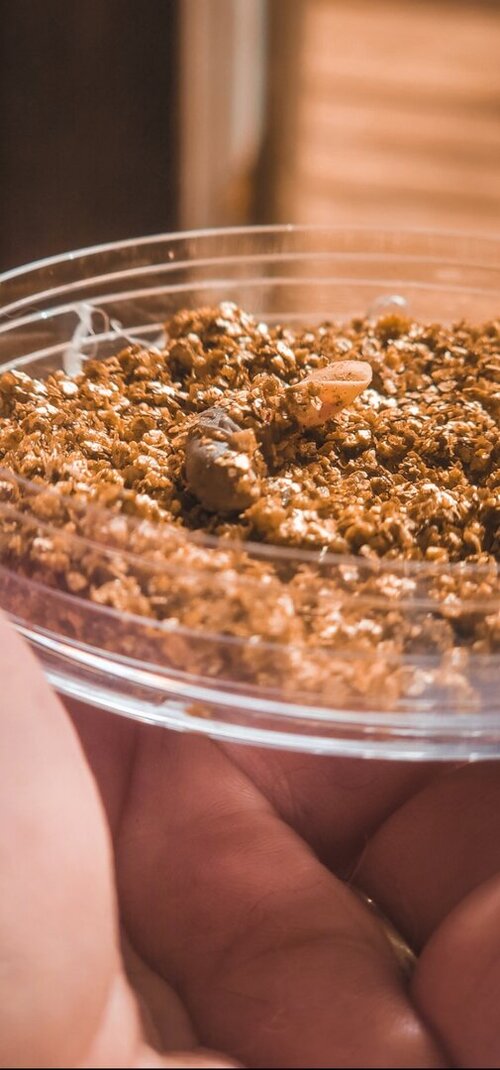 Screenshot_20220605-170942_Lightroom.jpg87.3 KB · Views: 210
Screenshot_20220605-170942_Lightroom.jpg87.3 KB · Views: 210 -
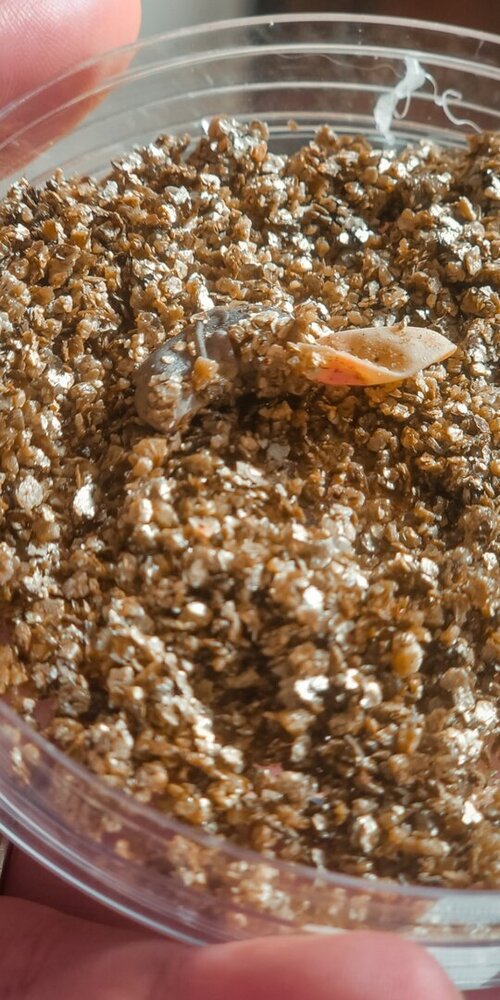 Screenshot_20220605-170852_Lightroom.jpg146.7 KB · Views: 205
Screenshot_20220605-170852_Lightroom.jpg146.7 KB · Views: 205 -
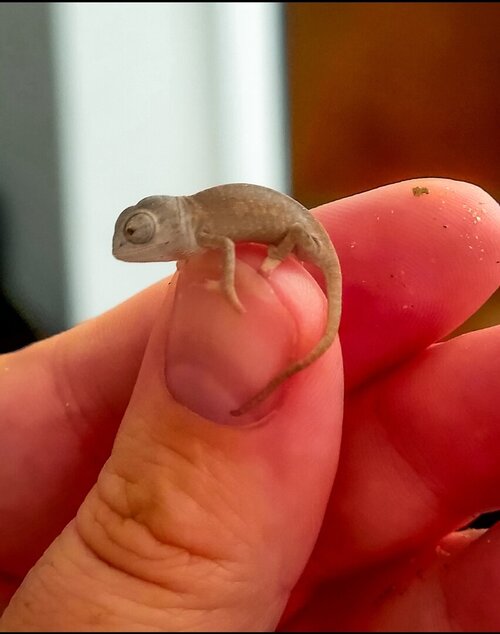 Screenshot_20220605-170741_Lightroom.jpg85.2 KB · Views: 200
Screenshot_20220605-170741_Lightroom.jpg85.2 KB · Views: 200 -
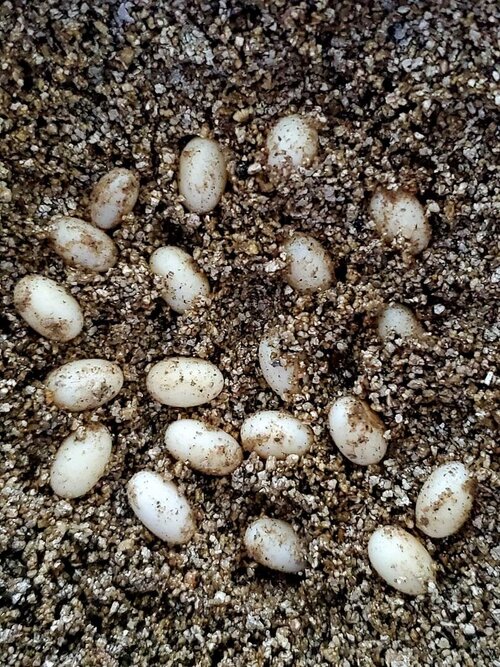 FB_IMG_1654555508012.jpg327.7 KB · Views: 203
FB_IMG_1654555508012.jpg327.7 KB · Views: 203 -
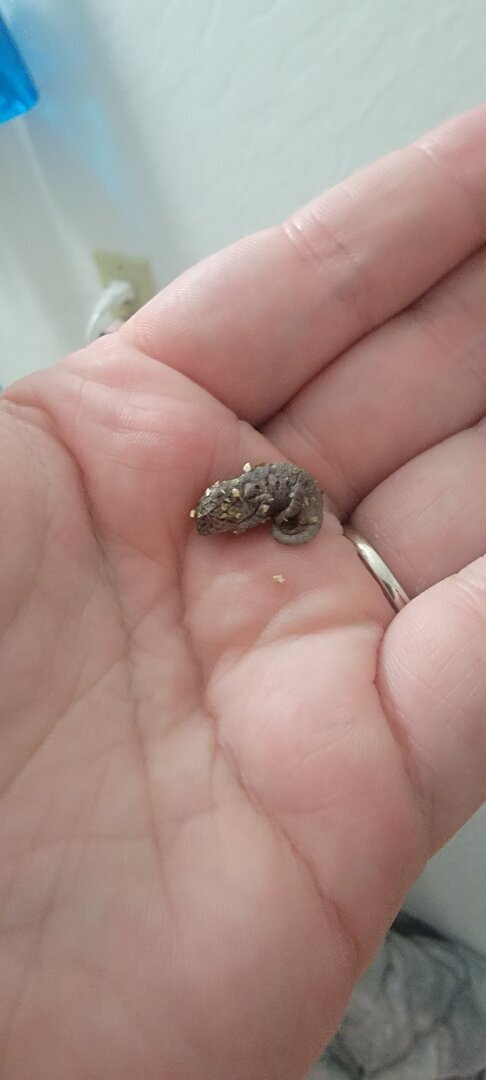 20220601_095744.jpg45.1 KB · Views: 218
20220601_095744.jpg45.1 KB · Views: 218 -
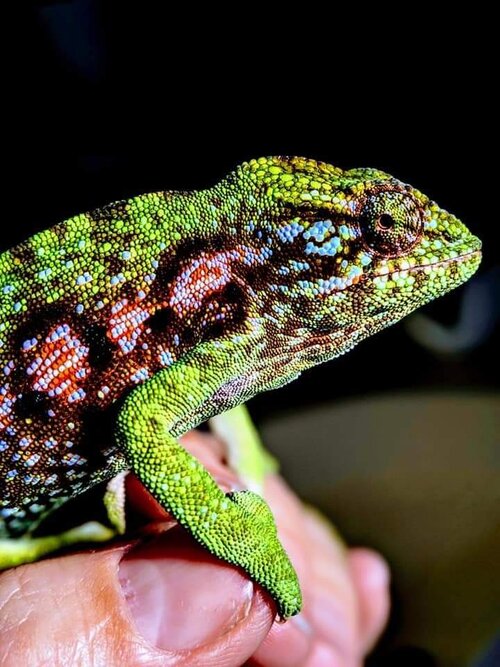 FB_IMG_1654555518731.jpg84.9 KB · Views: 214
FB_IMG_1654555518731.jpg84.9 KB · Views: 214 -
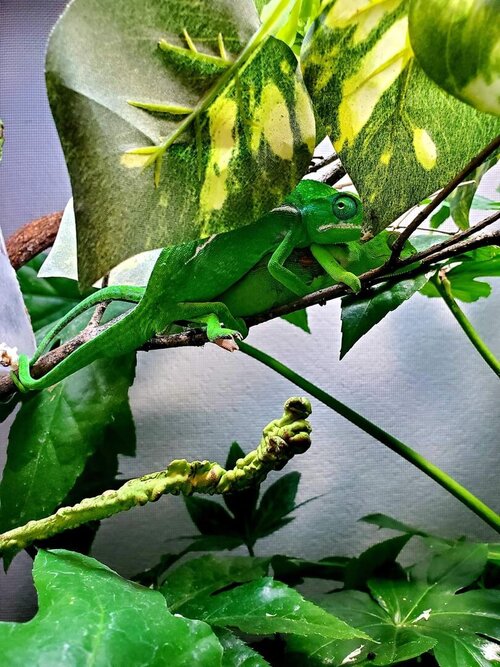 FB_IMG_1654555529503.jpg234.3 KB · Views: 221
FB_IMG_1654555529503.jpg234.3 KB · Views: 221 -
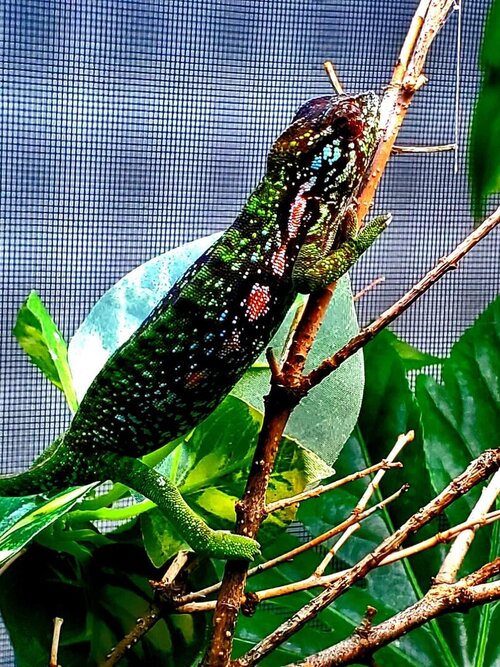 FB_IMG_1654555537582.jpg305 KB · Views: 211
FB_IMG_1654555537582.jpg305 KB · Views: 211





